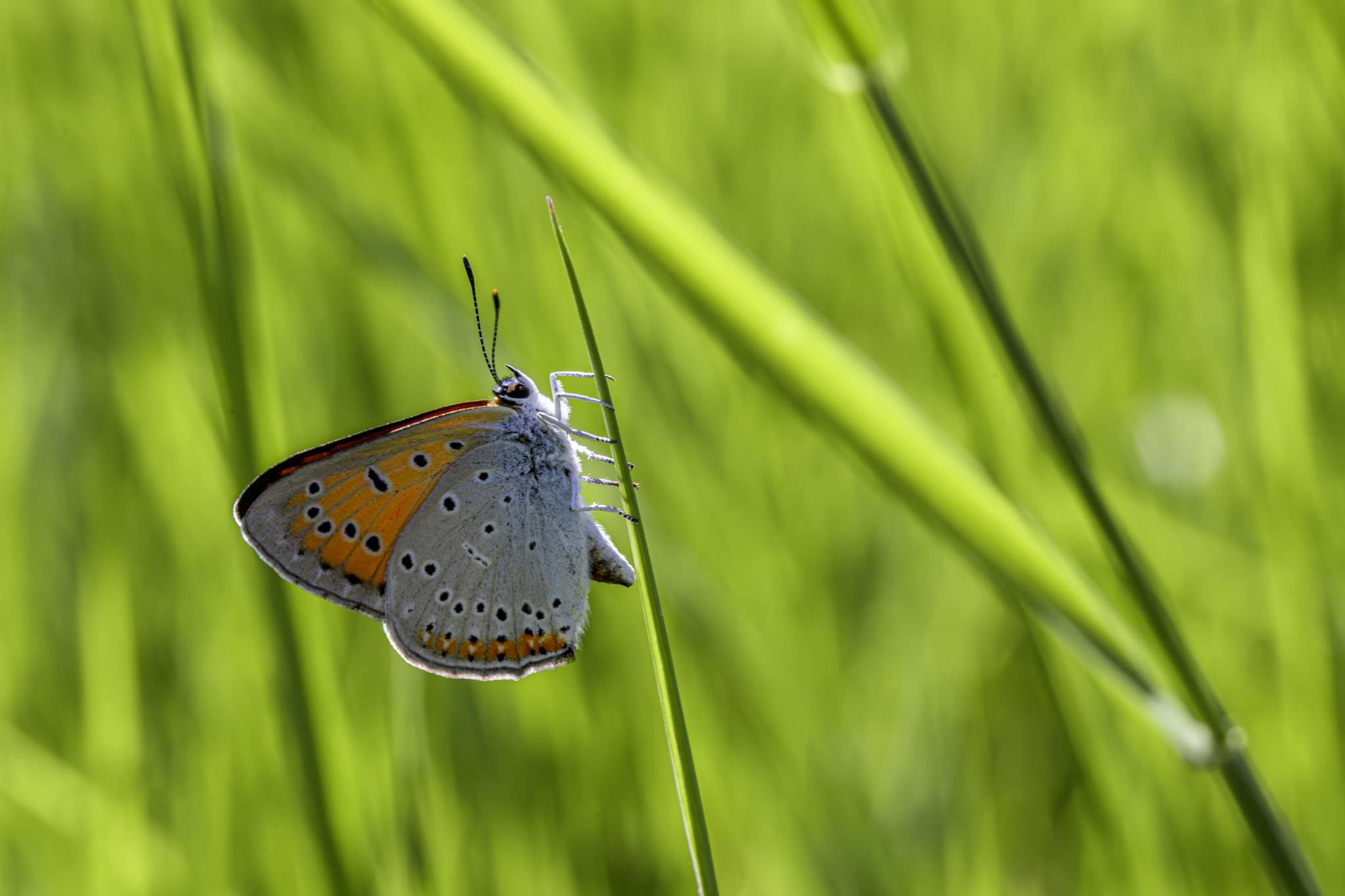Here’s a complete overview of the Large Copper (Lycaena dispar):
🦋 Large Copper (Lycaena dispar)
Taxonomy:
- Order: Lepidoptera
- Family: Lycaenidae (Gossamer-winged Butterflies)
- Genus: Lycaena
- Species: Lycaena dispar
🧡 Identification
The Large Copper is one of Europe’s most striking butterflies, known for its brilliant orange upperwings with dark brown margins and spots.
- Males have an intense copper-orange sheen with narrow dark borders.
- Females are slightly larger and darker, often showing black spotting on both forewings and hindwings.
- Undersides are pale grayish-brown with black dots and subtle orange suffusion near the wing edges.
Wingspan ranges from 35–45 mm, making it noticeably larger than other Lycaena species such as the Small Copper (Lycaena phlaeas).
🌿 Habitat and Distribution
Historically widespread across Europe and western Asia, the Large Copper has suffered severe habitat loss due to wetland drainage and agricultural intensification.
Today, it survives in scattered populations, mainly in Eastern Europe, the Netherlands, and parts of Asia.
Preferred habitats include:
- Marshes and fens
- Wet meadows
- River floodplains
- Reed beds and sedge zones
Its presence is strongly linked to water-loving dock plants (Rumex spp.), the larval host plants.
🐛 Life Cycle
The species typically produces one to two generations per year, depending on the climate.
- Eggs – Laid singly on the underside of dock leaves.
- Larvae (Caterpillars) – Green with fine white lines, feeding on dock leaves.
- Pupae (Chrysalis) – Attached low on vegetation, well-camouflaged.
- Adults – Emerge from June to August, flying actively in warm sunshine.
The species overwinters as a larva, often in low vegetation near the host plant.
🌍 Ecological Role and Conservation
Lycaena dispar is an indicator of healthy wetland ecosystems. Its decline mirrors that of Europe’s wet meadow biodiversity.
It is now listed as:
- Protected under the EU Habitats Directive (Annex II and IV)
- Near Threatened or Endangered in several European countries
Conservation efforts focus on restoring traditional wet meadow management and maintaining host plant-rich habitats.
⚙️ Special Adaptations
- Thermoregulation: Reflective copper scales aid in warming up quickly under sunlight.
- Wetland specialization: Reliance on moisture-dependent host plants.
- Sexual dimorphism: Bright males and more cryptic females for survival and reproduction efficiency.
📏 Key Facts
- Wingspan: 35–45 mm
- Color: Bright copper-orange with dark margins
- Flight period: June–August (varies with climate)
- Host plants: Rumex hydrolapathum, Rumex crispus, Rumex obtusifolius
- Habitat: Wet meadows, fens, river margins
- Range: Europe to Central Asia
Views: 1280
Subscribe to the newsletter:
